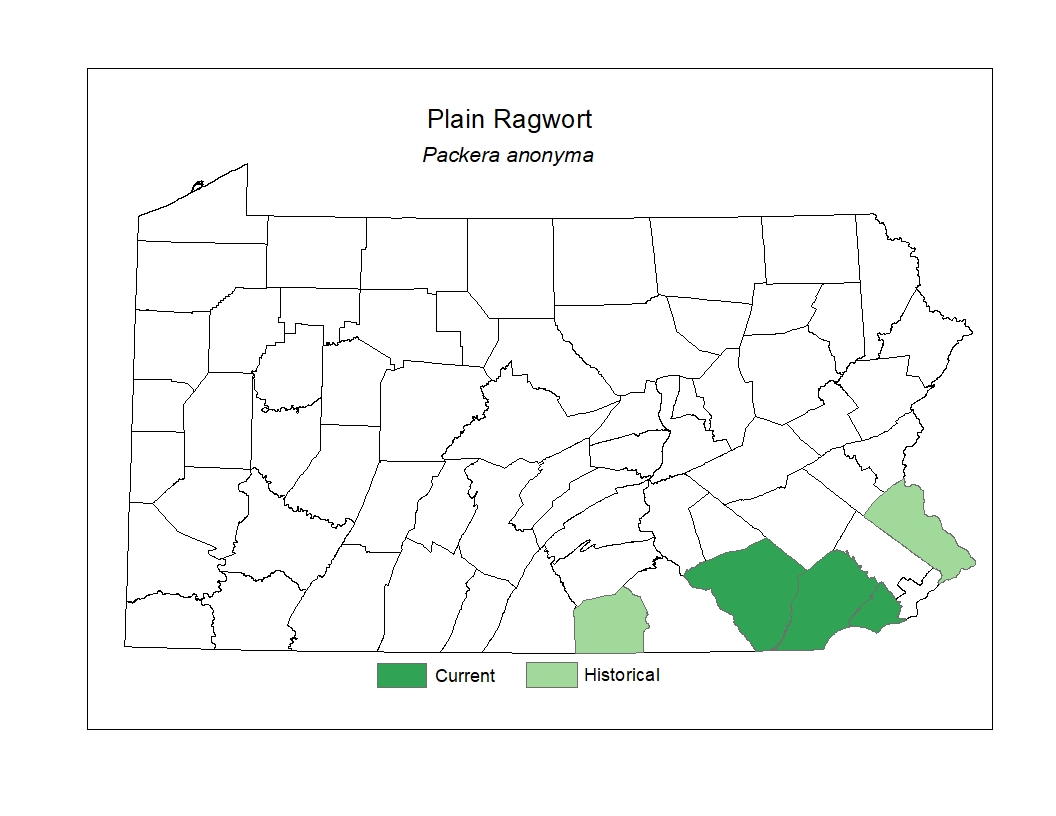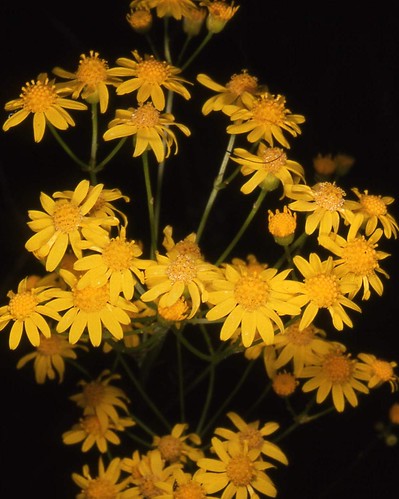 Species Factsheets
Species Factsheets
Packera anonyma
Appalachian groundsel
State Status: Pennsylvania Rare (PR)
PBS Status: Pennsylvania Rare (PR)
Federal Status:
Global Rank: G5
![]() rank interpretation
rank interpretation
State Rank: S2
Did You Know?
The genus name Packera gets its name from Dr. John Packer, a distinguished North American botanist.
Description
Appalachian groundsel (Packera anonyma) is a perennial member of the aster family that bears numerous yellow, aster-like flower heads, between three and eight decimeters tall and are densely wooly at the base. The leaves grow from the base of the plant as well as along the stems. Basal leaves are toothed, lance-shaped to elliptic, and taper at their base to a petiole. Stem leaves are smaller, deeply dissected, and may attach without a petiole. The flowers are displayed in terminal, flat-topped clusters of twenty to one hundred flower heads. Individual flower-heads are about 13-20mm wide and have a yellow central disk surrounded by eight to fifteen yellow rays.
Rank Justification
Imperiled in the nation or state because of rarity due to very restricted range, very few populations (often 20 or fewer), steep declines, or other factors making it very vulnerable to extirpation from the nation or state.
PABS
The PA Biological Survey (PABS) considers Appalachian groundsel to be a species of special concern, based on the relatively few occurrences that have been recently confirmed and its serpentine habitat. It has a PA legal rarity status and a PABS suggested rarity status of Rare.
Habitat
In Pennsylvania this species is most commonly found growing in serpentine barrens and in dry, open woods.
Survey Dates
Flowers May - September
Distribution

Threats
Quarrying and habitat loss are threats in some locations.
Management
The viability of populations of Appalachian groundsel and its serpentine habitat will require maintaining early successional conditionsand controlling invasive species. Active management, through the use of fire, scraping the substrate, or mowing, may be needed to create the proper successional stage and ecological conditions for this species to thrive.
Conservation Status Map


NatureServe. 2017. NatureServe Explorer: An online encyclopedia of life [web application]. Version 7.1. NatureServe, Arlington, Virginia. Available https://explorer.natureserve.org.
https://www.alabamaplants.com/Yellowalt/Packera_anonyma_page.html
- NatureServe. 2018. NatureServe Explorer: An online encyclopedia of life [web application]. Version 7.1. NatureServe, Arlington, Virginia. Available at https://www.natureserve.org/explorer
- Pennsylvania Natural Heritage Program. 2018.
- Rhoads, A.F. and W.M. Klein, Jr. 1993. The Vascular Flora of Pennsylvania. American Philosophical Society, Philadelphia, Pennsylvania. Rhoads, A.F. and T.A. Block.
- 2007. The Plants of Pennsylvania: An Illustrated Manual. 2nd edition. University of Pennsylvania Press, Philadelphia, Pennsylvania.







